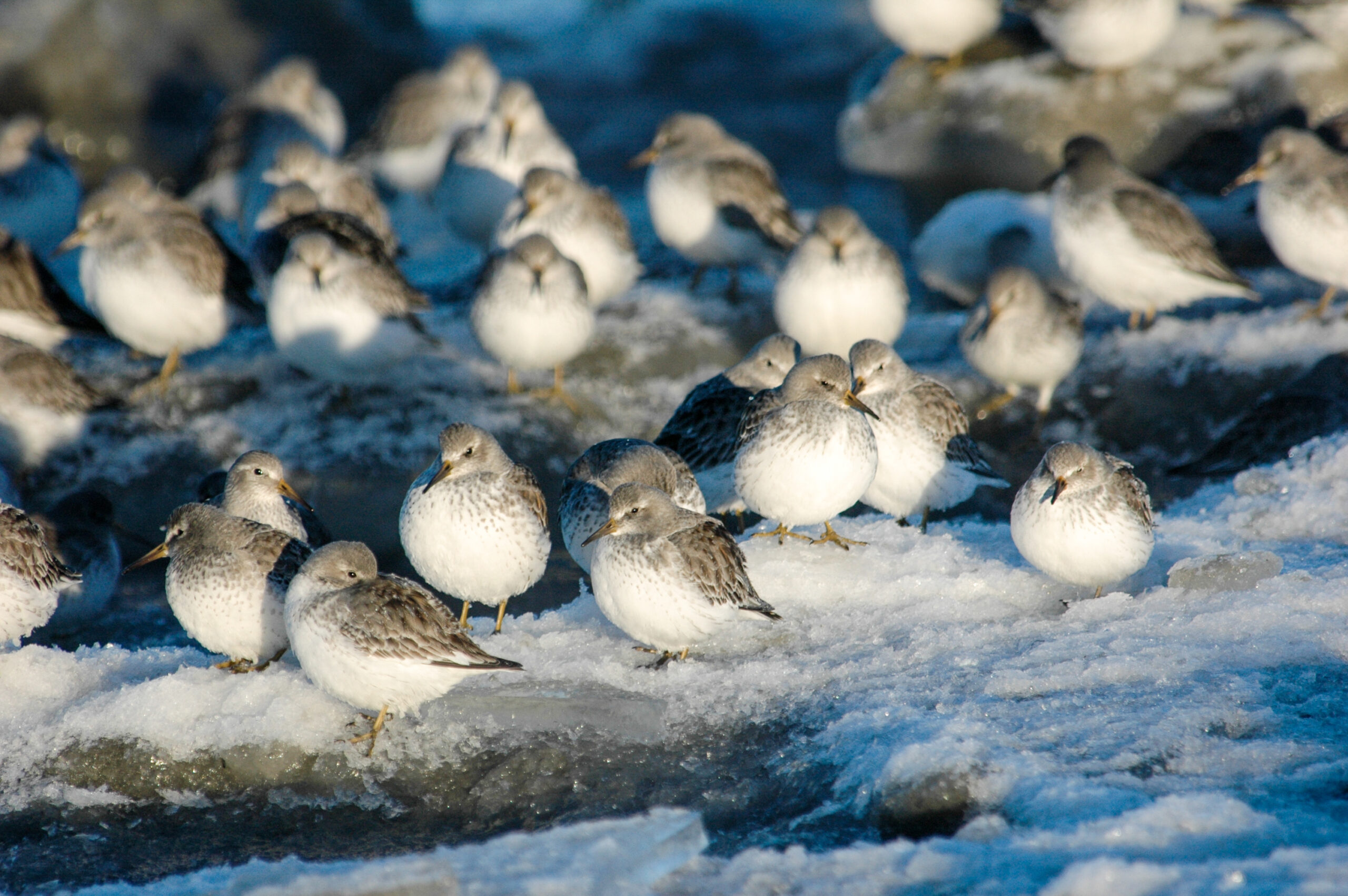Program Overview
The National Coastal Wetlands Conservation Grant Program, administered by the U.S. Fish and Wildlife Service (USFWS), provides support to ensure that coastal habitats and fish and wildlife species thrive well into the future. Each year, grants ranging from $50,000 to $1 million are awarded to acquire, restore, enhance, and/or manage coastal wetlands and associated uplands and contribute to the long-term conservation of coastal wetland ecosystems. These grants are only awarded to eligible State, Commonwealth, or Territory agencies. However, agencies often collaborate with partners such as land trusts, Tribes, conservation organizations, and other entities to plan and deliver the conservation outcomes.
Within Pacific Birds boundaries, eligible project areas include the coastal regions of Alaska, Washington, Oregon and northern California, as well as Hawaiʻi. American Samoa, the Commonwealth of the Northern Mariana Islands, and Guam are also within the scope of the grant program.

© Dan Ruthrauff
The National Coastal Wetlands Conservation Grant Program is a competitive grant program with a minimum non-Federal match requirement (or cost-share) of 25%. The application deadline by the appropriate State, Commonwealth, or Territory agency is usually in late June of each year. Each authorized agency has its own application procedures and deadlines for working with partners. It is important to contact these agencies directly well ahead of the submission date if you have a project that you think is appropriate for a National Coastal Wetlands Conservation Grant.
State or USFWS personnel (listed under contacts below) are ultimately the best people to talk to about a potential proposal. As a Habitat Joint Venture working to conserve habitats that support birds, Pacific Birds also has an interest in helping you succeed at acquiring, restoring or enhancing coastal acres. We can assist as you consider your potential project, help you evaluate the bird and habitat values of the project acreage, or work with you to seek out potential partners and match funds. We can also help you identify how your potential project aligns with Pacific Birds priorities, major bird conservation plans, and species of concern lists–all of which will strengthen your proposal.
Please contact us if you would like assistance from the Joint Venture.
Is the NCWC Grant Program a good fit for your project?
National Coastal Wetlands Grants proposals are ranked on the following 13 criteria. These criteria are part of the scoring process, but note that not all the criteria need to be met with one proposal.
Will the project reverse coastal wetland loss of habitat degradation in decreasing or stable coastal wetland types? Will it conserve wetlands to prevent losses of decreasing or stable wetland types?
Will the proposal significantly benefit maritime forests on coastal barriers? (Pacific Birds region contains no maritime forests as defined in the criteria and program regulations.)
Will the project ensure long‐term conservation of coastal wetland functions? The project must provide at least 20 years of conservation benefits to be eligible.
Will the completed project help accomplish the natural resource goals and objectives of one or more formal, ongoing coastal ecosystem or coastal watershed management plan(s) or effort(s)?
Will the project benefit any federally listed endangered or threatened species, species proposed for Federal listing, recently delisted species, or designated or proposed critical habitat in coastal wetlands? Will the project benefit State-listed threatened or endangered species?
Will the project provide, restore, or enhance important fisheries habitat?
Will the project provide, restore, or enhance important habitat for coastal‐dependent or migratory birds?
Will the project prevent or reduce input of contaminants, or remove existing contaminants from coastal wetlands and associated coastal waters?
Will the project leverage other ongoing coastal wetlands conservation efforts in an area or provide additional impetus for conservation?
Will the project receive financial support, including in‐kind match, from private, local or other Federal partners?
Does the proposal significantly reduce the Federal share of the project by providing more than the required match amount?
Does the proposed project include a site-specific, substantive outreach/education program? Does it provide recreational opportunities that are consistent with the conservation goals of the site?
Are there any other factors not covered in the previous criteria that make your proposed project or site particularly unique and valuable? Such as, but not limited to:
- Projects providing significant benefits to rare or threatened habitat types, biodiverse habitats, rare and declining species, and/or the local community;
- Projects that are particularly cost-effective;
- Projects that assist in the prevention or control of invasive species;
- Projects that provide important cultural or historical resource benefits;
- Projects designed to significantly advance climate change adaptation, especially those that reference Sea Level Rise modeling and/or analyses that indicate the targeted parcel(s) will be conserved, and function as intended, in perpetuity;
- Projects that help build the capacity of underserved insular jurisdictions to conserve coastal wetlands ecosystems, including Guam, the Commonwealth of the Northern Mariana Islands, American Samoa, Puerto Rico, and the U.S. Virgin Islands.
